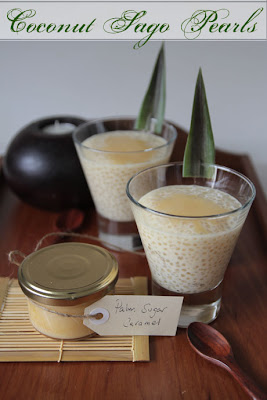Sago Pearls or Sagu
A Melanau woman making sago pearls using the traditional method
Food for both the rich and poor, sago is a starch that has many uses.
IF there is any food that can transcend social status, it is sago. As a staple food or gourmet dessert, it can be enjoyed by both pauper and prince.
Served in many South-East Asian homes, it is in Malaysia particularly important among the Melanau and Penan in Sarawak. The Penan used to roam the jungles of Borneo to search for their naok (wild sago) and the Melanau considered it (the Metroxylon sagu variety) a staple food, a source of wealth, and a life-saver during “dry days” or in times of strife.
The older generations of Melanau say that sago saved them from starvation in World War II. They also say it was the sago trade that made the Brookes decide to acquire Mukah from the Brunei Sultanate in 1860. Thus, for the Melanau and the Penan, sago is fondly dubbed the “Tree of Life”.
Traditional method of cleaning wet sago flour for home consumption in villages in Mukah
Sago Pudding
Sago, which is widely available in the form of pearls, is used in desserts such as the popular sago with gula apung or gula melaka and coconut milk or evaporated milk and sago pudding. In India, where sago pearl is known by various regional names, it is used in a variety of dishes such as desserts boiled with sweetened milk that are used on certain religious occasions. In Ayurvedic medicine, it is believed that sago porridge is an effective and simple food to “cool and balance one’s body heat” while one is on strong medication or antibiotics.
Sago Pellets
Sago Pearls
Bubur Sagu
Recipe A : Bubur Sagu
(Melanau version is known as dedenguk)
Ingredients :
Sago Pearls
Coconut milk (thin)
Pandanus leaf
Brown sugar preferably gula apung
Salt
(Sweet potatoes – optional)
Methods :
1. Boil sago pearls until only a tiny dot of white can be seen in the pearls.
2. Remove and drain under cold water to wash off the extra starch.
3. Put coconut milk in a pot and boil over low heat.
4. Add the sago pearls, brown sugar to taste, a bit salt and pandanus leaf for aroma.
5. Add sweet potatoes if preferred.
Cooking time about 15 to 20 minutes. It can be served hot or chilled.

Recipe B : Sago pearls with palm sugar syrup and coconut milk
Ingredients:
1 cup sago pearls (also known as tapioca pearls)
1.5 liter water for boiling
For palm sugar syrup:
100 g palm sugar (known as gula Melaka or gula kabung in Malaysia), chopped roughly
100 ml water
2 screwpine (pandan) leaves knotted, optional (for added fragrance)
For coconut milk mixture:
Freshly squeezed coconut milk from 1 coconut (or you can used packet coconut milk or buy fresh coconut milk from the market), added with a pinch of salt and chilled for at least 1 hour
Methods :
1. Wash sago with tap water and drain. Boil water in a medium pot and add in the drained sago when the water has reached boiling point. Keep stirring to avoid sticking to the bottom of the pot and turn off heat when sago pearls turn transparent. Drain off excess water from the sago pearls using a sieve. Spoon sago pearls into moulds and leave to cool before chilling in the refrigerator for at least 1 hour.
2. Boil water for the palm sugar syrup with the screwpine leaves. Keep stirring until sugar has fully dissolved. Pour out and leave to cool. Keep the syrup chilled in refrigerator.
3. When the sago pearls have set in the mould, unmould into a dessert bowl and spoon 2 tbsp of chilled palm sugar syrup over the sago pearls, and 2 – 3 tbsp of coconut milk on top. Adjust the amount of syrup and coconut milk according to your own liking.







No comments:
Post a Comment